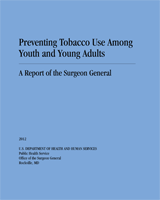From: 5, The Tobacco Industry’s Influences on the Use of Tobacco Among Youth

NCBI Bookshelf. A service of the National Library of Medicine, National Institutes of Health.

Source: Figure A (a tobacco document reproduced as Figure 1 in Mandel et al. 2006).
Note: This slide, from a 1999 Philip Morris (PM) “Key Initiative Update,” describes how it hoped to use its youth smoking prevention strategy as it sought a “paradigm shift” (Philip Morris USA 1999a) away from the “medical model,” such as the California Tobacco Control Program (California Department of Health Services/Tobacco Control Section 1998), which highlights the industry’s deceptive behavior, to a “positive youth development model” that permits the industry to be viewed as a partner in reducing youth smoking. PM selected Life Skills Training (LST) because it believed that LST supported this objective.
From: 5, The Tobacco Industry’s Influences on the Use of Tobacco Among Youth

NCBI Bookshelf. A service of the National Library of Medicine, National Institutes of Health.